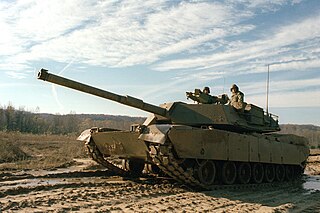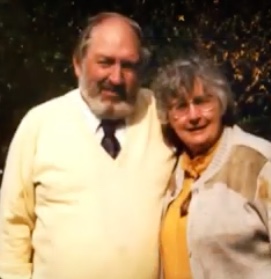Related Research Articles

Chobham armour is the informal name of a composite armour developed in the 1960s at the Military Vehicles and Engineering Establishment, British tank research centre. The name has since become the common generic term for composite ceramic vehicle armour. Other names informally given to Chobham armour include Burlington and Dorchester. Special armour is a broader informal term referring to any armour arrangement comprising sandwich reactive plates, including Chobham armour.
The Royal Radar Establishment was a research centre in Malvern, Worcestershire in the United Kingdom. It was formed in 1953 as the Radar Research Establishment by the merger of the Air Ministry's Telecommunications Research Establishment (TRE) and the British Army's Radar Research and Development Establishment (RRDE). It was given its new name after a visit by Queen Elizabeth II in 1957. Both names were abbreviated to RRE. In 1976 the Signals Research and Development Establishment (SRDE), involved in communications research, joined the RRE to form the Royal Signals and Radar Establishment (RSRE).
The Royal Signals and Radar Establishment (RSRE) was a scientific research establishment within the Ministry of Defence (MoD) of the United Kingdom. It was located primarily at Malvern in Worcestershire, England. The RSRE motto was Ubique Sentio.

Porton Down is a science and defence technology campus in Wiltshire, England, just north-east of the village of Porton, near Salisbury. It is home to two British government facilities: a site of the Ministry of Defence's Defence Science and Technology Laboratory – known for over 100 years as one of the UK's most secretive and controversial military research facilities, occupying 7,000 acres (2,800 ha) – and a site of the UK Health Security Agency. Since 2018, part of the campus has housed Porton Science Park, which is owned and operated by Wiltshire Council and has private sector companies in the health, life science and defence and security sectors.
The Defence Research Establishments were a number of separate UK Ministry of Defence Research Establishments, dating back to World War II, World War I, or even earlier. Each establishment had its own head; known as the Director or the Superintendent. Prior to the formation of the Ministry of Defence each of the three Services, i.e. the Royal Air Force, the Admiralty and the War Office, had their own research establishments; although some establishments had tri-service functions.
The Defence Evaluation and Research Agency (DERA) was a part of the UK Ministry of Defence (MoD) between 1995 and 2 July 2001. At the time it was the United Kingdom's largest science and technology organisation. It was regarded by its official history as 'a jewel in the crown' of both government and industry.
QinetiQ is a multinational defence technology company headquartered in Farnborough, Hampshire. It operates primarily in the defence, security and critical national infrastructure markets and run testing and evaluation capabilities for air, land, sea and target systems.
Longcross is a village in the Borough of Runnymede in Surrey, England, approximately 34.6 kilometres (21.5 mi) west of central London. Its name is thought to come from a marker, placed where the parish boundaries of Chertsey, Chobham and Egham met.
The Defence Research Agency (DRA) was an executive agency of the UK Ministry of Defence (MOD) from April 1991 until April 1995. At the time, the DRA was Britain's largest science and technology organisation. In April 1995, the DRA was combined with five other MOD establishments to form the Defence Evaluation and Research Agency.

The Ministry of Supply (MoS) was a department of the UK government formed on 1 August 1939 by the Ministry of Supply Act 1939 to co-ordinate the supply of equipment to all three British armed forces, headed by the Minister of Supply. A separate ministry, however, was responsible for aircraft production, and the Admiralty retained responsibilities for supplying the Royal Navy. During the war years the MoS was based at Shell Mex House in The Strand, London.

The Defence Science and Technology Laboratory (Dstl) is an executive agency of the Ministry of Defence of the United Kingdom. Its stated purpose is "to maximise the impact of science and technology for the defence and security of the UK". The agency is headed by Paul Hollinshead as its chief executive, with the board being chaired by Adrian Belton. Ministerial responsibility lies with the Minister for Defence Procurement.

Fort Halstead was a research site of the Defence Science and Technology Laboratory (Dstl), an executive agency of the UK Ministry of Defence. It is situated on the crest of the Kentish North Downs, overlooking the town of Sevenoaks, southeast of London. Originally constructed in 1892 as part of a ring of fortresses around London, Fort Halstead was to be staffed by volunteers in the event of a crisis.
The Aeroplane and Armament Experimental Establishment (A&AEE) was a research facility for British military aviation from 1918 to 1992. Established at Martlesham Heath, Suffolk, the unit moved in 1939 to Boscombe Down, Wiltshire, where its work continues following privatisation as part of the Qinetiq company.

A trading fund is an executive agency, government department or often simply a part of a department, that enables the department to handle its own revenues and expenses separately from overall government finances and more like a business, as opposed to having to obtain funding from the government's legislature and feeding income back into its treasury. A Hong Kong governmental study of trading funds in the UK and Hong Kong describes their nature and purpose as follows:
A trading fund is a financial and accounting framework established by law to enable a government department, or part of a department, to adopt certain accounting and management practices common in the private sector. [The fund] operates on a self-financing basis and does not need to regularly seek funding from the legislature to finance its daily operations after its establishment... the intention [is that such] an institutional change would provide the appropriate flexibility in resource management and nurture a new working culture to improve services in terms of both quality and cost-effectiveness.

Roy Leonard Dommett was a British engineer and rocket scientist, and the United Kingdom's Chief Missile Scientist, who for many years led the United Kingdom's research and development of both ballistic missiles and space rockets for the delivery of satellites into orbit. In retirement he lived in Hampshire.

HMS Osprey was an anti-submarine training establishment located at the Isle of Portland, Dorset, England. It was active between 1924 and 1941, and again from 1946 to 1999. The helicopter station RNAS Portland formed part of the establishment from 1959 to 1999.

The FV4601 MBT-80 was a British experimental third-generation main battle tank, designed in the late 1970s to replace the Chieftain tank. It was eventually cancelled in favour of the Challenger 1, itself an evolution of the Chieftain design.

The Military Engineering Experimental Establishment (MEXE) was a British defence research unit. It was formed from the Experimental Bridging Establishment in 1946 and was amalgamated with the Fighting Vehicles Research and Development Establishment to form the Military Vehicles and Engineering Establishment in 1970. MEXE developed the MEXE method, the MEXE probe and the MEXE system.
Stillbrew armour, or more correctly, the Stillbrew Crew Protection Package (SCPP) was an add-on passive composite armour applied to the FV4201 Chieftain main battle tank used by the British Army's Royal Armoured Corps in the mid-1980s and early-1990s so as to provide increased protection from anti-tank warfare weapons. It was named after the two men that invented it, Colonel Still and John Brewer, from the Military Vehicles and Engineering Establishment in Surrey. The tanks to which it was fitted were colloquially referred to as Stillbrew Chieftains.
Non-explosive reactive armour (NxRA), also known as non-energetic reactive armor (NERA), is a type of vehicle armor used by modern main battle tanks and heavy infantry fighting vehicles. NERA advantages over explosive reactive armor (ERA) are its inexpensiveness, multi-hit capability, and ease of integration onto armored vehicles due to its nonexplosive nature.
References
- 1 2 3 4 5 6 7 8 9 10 11 12 13 14 "Dstl – Our Story So Far". Defence Science and Technology Laboratory. 2010. Archived from the original (Word Document) on 23 March 2012.
- 1 2 "DERA Committee Report – RU.05/0538" (PDF). Runnymede Council. 17 March 2008. Archived from the original (PDF) on 27 March 2012. Retrieved 15 September 2011.
- ↑ "Gazeley buys Hants site". Property Week. 27 February 2004. Retrieved 15 September 2011.
- ↑ "The History of Longcross Film Studios". Discover Longcross. Archived from the original on 13 September 2018. Retrieved 13 September 2020.
- ↑ "Longcross Garden Village". Archived from the original on 18 September 2020. Retrieved 13 September 2020.